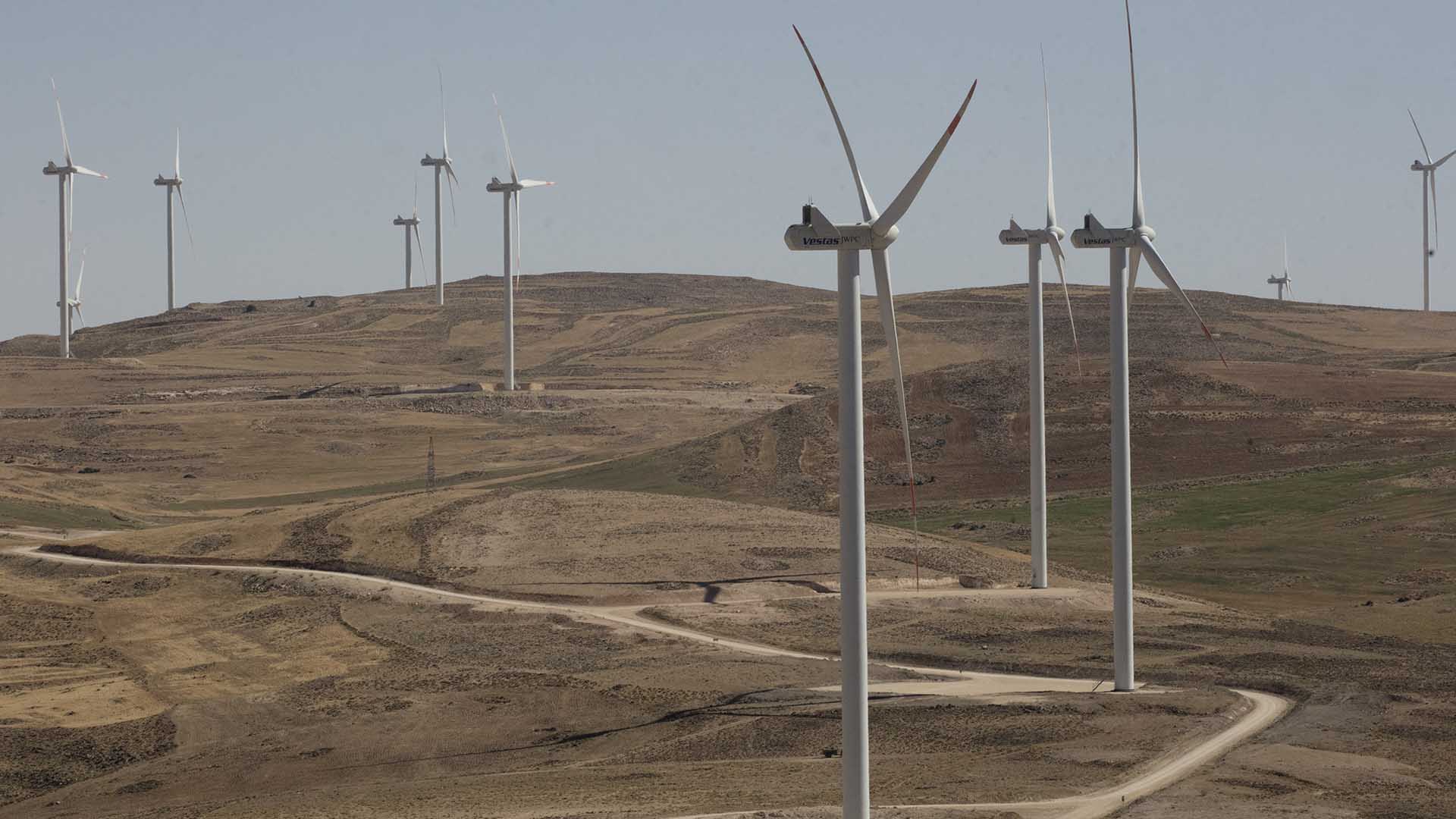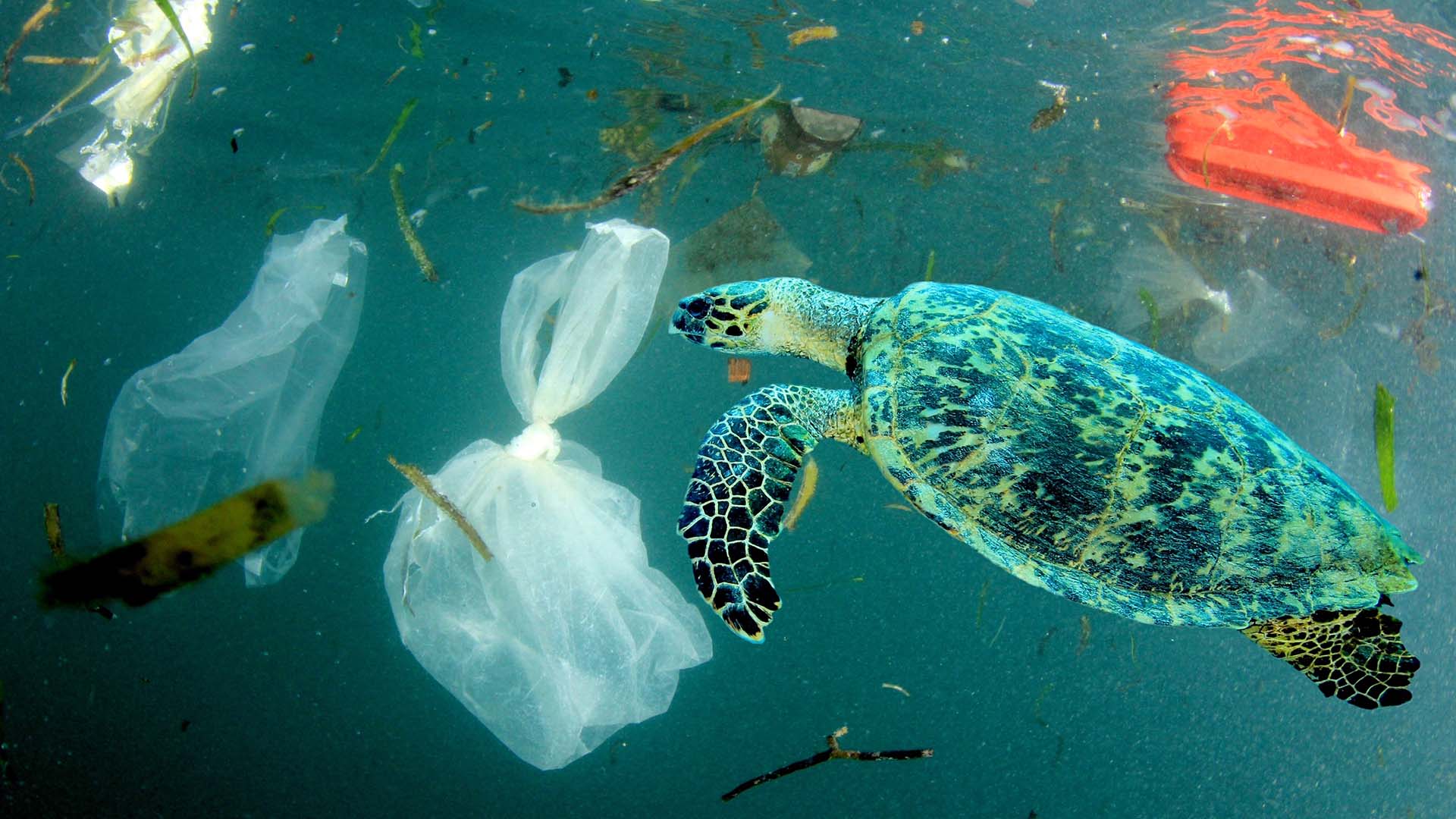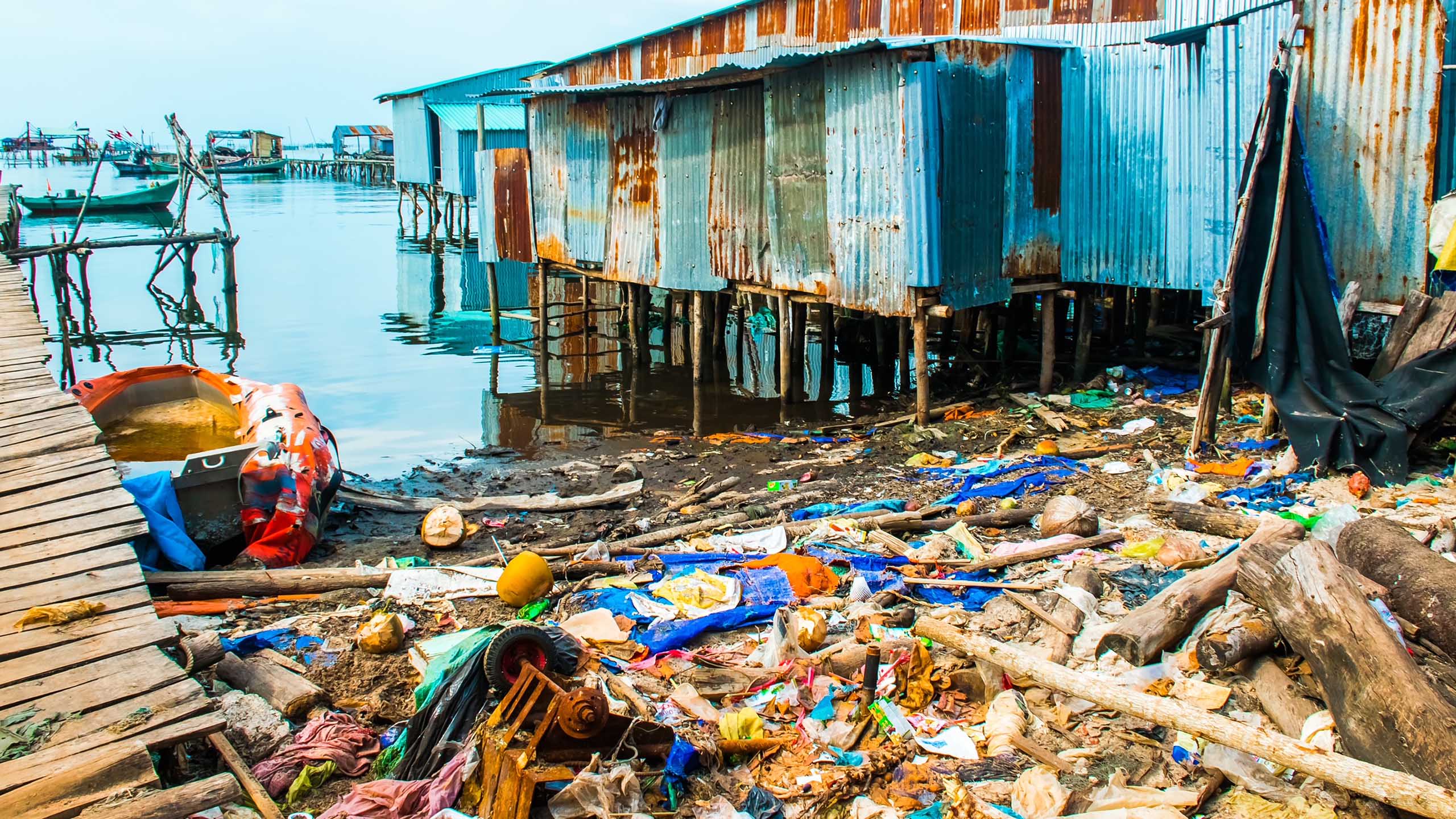Financing the Transition to Net Zero
How sustainability-linked bonds, blue loans, and other new financing tools target the climate crisis

Sembcorp Industries, an energy and urban development company based in Singapore that works in countries including Bangladesh, India, and Vietnam, has set some of the most ambitious sustainability targets among energy players in Asia. Its plans include a goal to quadruple its renewable energy capacity to 10 gigawatts by the end of 2025.
And if it fails to meet those targets, there’s a price to pay: Investors in a new, innovative type of bond the company issued in October get a higher payout—0.25 percent more than the current coupon.
“This bond completely aligns us with the notion of energy transition,” said Eugene Cheng, Group Chief Financial Officer of Sembcorp. “We are focused on aligning every single aspect of everything we do to it, even our corporate culture. A lot of players consider green financing restrictive, because it is only intended for use for renewables and green projects. With sustainability-linked financing, you have to define your sustainability performance targets. There will be certain companies that will perhaps define those targets more loosely, but for Sembcorp, they’re very clear.”
Sembcorp’s sustainability-linked bond (SLB)—the first ever issued by an energy company in Southeast Asia and the region’s largest such issuance to date at $675 million Singapore dollars ($501 million)—is an example of one of the new financing tools that will play a huge role in lowering the world’s greenhouse gas (GHG) emissions. While financing the transition to net zero carbon emissions has become too big of an ask for governments—especially in the wake of COVID-19—investors are sitting on trillions of dollars looking to find a home in sustainable assets. Meanwhile, more innovative types of instruments are emerging for them to invest in, suggesting capital markets will play a much bigger role in tackling climate change going forward.
“Governments and banks can’t finance the transition to net zero alone,” said Peter Cashion, Chief Investment Officer and Global Head of Climate Finance, Financial Institutions Group at IFC. “Capital markets are an absolutely essential tool to finance what’s needed.”

"Code Red" for Humanity
As heatwaves around the world hit record levels and wildfires cause widespread damage from Turkey to Siberia, it is becoming clear that the world is waking up from the COVID-19 pandemic to a climate crisis. Scientists are observing changes in the Earth’s climate in every region and across the whole climate system that are unprecedented in thousands—if not hundreds of thousands—of years, according to a United Nations report in August, which UN Secretary-General António Guterres described as a “code red for humanity."

Photo by: WIJI/Shutterstock
Photo by: WIJI/Shutterstock
As some 25,000 delegates meet in Glasgow for the United Nations global climate summit to accelerate action to avert a climate catastrophe, the question of how the world finances the transition to net zero by 2050 hangs in the balance. Over the next three decades, the total required investments to meet that target in the energy sector alone is estimated by the International Energy Agency at $3.5 trillion a year.
With global public debt set to reach 99 percent of GDP this year in the wake of COVID-19, according to the International Monetary Fund, governments cannot be expected to finance the transition alone. With pension funds, insurers, and investment funds sitting on assets valued at over $200 trillion, according to estimates from the Financial Stability Board, capital markets are the solution.
“The question is, how do we get that money into these sectors?” said Cashion. “You have to create investable deals that can be accessed efficiently, and that’s the definition of capital markets. You have rated, efficient deals, repeat issuers, and the amount of institutional investor money is 900 times the size of development finance institution money.”
Green Shoots
Since the World Bank issued the world’s first green bond in 2008, the market has ballooned. Issuance surpassed the $1 trillion-mark last year, and could reach $500 billion this year alone, according to projections from the Climate Bonds Initiative.
But the market is still in its infancy in many emerging economies, which generate more than half of the world’s greenhouse gas emissions. Only 29 percent of the $226 billion of green bonds issued in emerging markets globally between 2012 and 2020 were issued outside of China . The Egyptian government, for example, issued its first green bond just last year, and its first private sector green bond followed in August.

“We need to roll out green bonds much more broadly, but we also need to increase and improve the tailoring of climate capital market products to maximize the impact and fit the needs of the issuer,” added Cashion. “That’s where these new types of instruments like sustainability-linked bonds come into play.”
Since Italian utility Enel issued the world’s first sustainability-linked bond in 2019, the market has grown significantly. Over $88 billion has been issued to date, according to data from Bloomberg, $72 billion of which has been issued this year alone. Still, SLBs require a solid understanding of the issuer’s business, industry, and market. Investors need to challenge issuers on their ambitions and commitments—and hold them to them.
“Green bonds sparked the growth of the green finance ecosystem, but only financing green projects will not take us to net zero by 2050,” said Berit Lindholdt-Lauridsen, Senior Climate Finance Specialist at IFC.
“We still depend on carbon-intensive industries, such as cement, chemicals, steel, and heavy transport, which are estimated to be responsible for almost 30 percent of global emissions," she said. "Transforming these sectors would contribute substantially to a reduction in carbon emissions. With that in mind, sustainable finance is the future of finance. However, to avoid 'sustainability washing,' issuers and investors must do their homework even more thoroughly to ensure targets are material, ambitious, and robust.”
Blue Beginnings
Blue finance is another tool that will support the global journey to net zero. Although traditionally classified as a subset of green finance, the urgency of the marine plastics crisis and the need for private-sector flows to address them has led to the market looking at blue finance as a specific asset class. Since the World Bank supported the Republic of Seychelles in the 2018 launch of the world’s first sovereign blue bond, issuance has also begun in the private sector.

Plastic pollution in the ocean. Photo by: Rich Carey/Shutterstock
Plastic pollution in the ocean. Photo by: Rich Carey/Shutterstock
Last year, IFC arranged a $300 million blue loan for Thailand’s Indorama Ventures, the world’s largest producer of recycled polyethylene terephthalate (PET) for beverage bottles, which it manufactures for clients including Coca-Cola. Indorama intends to use the funding to achieve its goal of recycling 50 billion PET bottles globally a year by 2025. It plans to do this by expanding its recycling capacity in Thailand, Indonesia, Philippines, India, and Brazil, countries that are grappling with mismanaged plastic waste, thereby diverting plastic waste from landfills and oceans.
Financing solutions to the marine plastic waste crisis plays its own role in the transition to net zero. Almost every piece of plastic is made from a fossil fuel, and GHGs are emitted at each stage of its lifecycle, from extraction and transport to refining, manufacturing and disposal. Production alone accounts for about 6 percent of global oil consumption, equivalent to the oil consumed by the global aviation sector, according to the World Economic Forum. If plastics usage continues as expected, the sector will account for 20 percent of oil consumption and 15 percent of the global annual carbon budget by 2050.
Plastic waste also causes significant damage to fragile ecosystems, and fisheries and aquaculture play a significant role in food security and the economies of many countries.
Healthy oceans provide jobs and food, sustain economic growth, regulate the climate, and support the well-being of coastal and urban communities. A recent report by Pew Charitable Trusts estimated that the amount of plastic waste entering the ocean could triple to 29 million metric tons per year by 2040 under a business-as-usual scenario. That’s the same as dumping 50 kilograms of plastic waste on every meter of coastline around the world.

Still, this is a huge business opportunity. Earlier this year, the World Bank Group published a series of market studies examining the untapped economic opportunities to promote plastic circularity and address marine debris in Malaysia, the Philippines, Thailand, and Vietnam. The studies show that over 75 percent of the material value of the plastics is lost--the equivalent of nearly $9 billion a year in these four countries—when single-use plastics are discarded rather than recovered and recycled.
Creating Carbon Finance Tools
Other climate-smart financing opportunities are also emerging for investors, including a range of innovations in the carbon finance market. In September, HSBC Australia and London-based Earth Security launched a new project that will develop a framework for a mangrove bond that can be used to protect and restore vital natural habitats, which they hope will develop a blueprint for such instruments that could be used by issuers globally.

Mangrove swamp in Cartagena, Colombia. Photo by: Mariano Gaspar/Shutterstock
Mangrove swamp in Cartagena, Colombia. Photo by: Mariano Gaspar/Shutterstock
Mangroves cover just 0.1 percent of the Earth’s surface but store up to 10 times more carbon per hectare than terrestrial forests, making them critical in global efforts to tackle climate change. In 2016, IFC also issued the world’s first forest bond, which channeled private funds into preventing deforestation in developing countries and gave investors the option of being paid in carbon-credit coupons rather than cash, which was also a first at the time.
Carbon credits provide businesses that cannot fully reduce their emissions with tradable certificates or permits representing the right to emit one ton of carbon dioxide or the equivalent amount of another greenhouse gas. The buyer can claim an offset as a result of financing either a reduction or avoidance of carbon emissions or the removal or sequestration of carbon dioxide in the atmosphere.
Voluntary carbon credit markets, aimed at purchases made voluntarily rather than for compliance purposes, direct private financing to climate-action projects that would not otherwise get off the ground, such as those aimed at biodiversity protection, pollution prevention, and public-health improvements.
Carbon credit markets have become a hotbed for financial innovation. Dutch impact investor BIX Capital, for example, provides working capital financing to small and medium-sized manufacturers and distributors of climate-smart household appliances backed by future cash flows from carbon credits, which help to bring clean cookstoves, water purification systems, and other appliances to low-income households in sub-Saharan Africa.
While most carbon credits are still traded over the counter, exchanges are beginning to add contracts as volumes increase. The market for these instruments could be worth upwards of $50 billion by 2030, or 15 times its size today, according to estimates by the Taskforce on Scaling Voluntary Carbon Markets.
The transition finance label is also gaining traction. This gives carbon-intensive companies that are committed to shifting their business activities from brown to green and achieving net zero emissions no later than 2050 access to the sustainable finance market.
Financial regulators in South Africa have identified transition finance as a priority to enable a low-carbon trajectory while ensuring a “just transition,” in which employment, including re-skilling, financial inclusion, and inequality, are addressed alongside environmental objectives.
Some of the country’s utilities have already begun mapping their transitions as part of capital raisings. In July, state-backed Eskom, which generates most of South Africa’s electricity from coal and ranks as its biggest emitter, announced funding plans for an ambitious strategy to transition away from coal consisting of a loan that will be advanced on a “pay-for-performance” basis, and paid out as decarbonization projects progress. Rolling out the infrastructure for these projects could create over 300,000 jobs, Eskom estimates.
“Like many countries in Africa but also many emerging economies, we’re a commodity exporter, which tend to be more carbon intensive,” said Vukile Davidson, South Africa’s National Treasury Director for Financial Stability.

Vukile Davidson. Photo courtesy: Vukile Davidson
Vukile Davidson. Photo courtesy: Vukile Davidson
“Navigating the transition in a way that is equitable, just and enduring will require taking on many stakeholders, many of whom are employed in activities that are particularly carbon intensive," Davidson said. "That’s a unique challenge for emerging economies that transition finance could help solve.”
Sustainable finance regulation is also moving up the policy agenda in many emerging economies including South Africa, Colombia, Chile, and Morocco, reflecting governments’ need to mobilize private capital to fund their commitments under the Paris Agreement and build the resilience of their financial systems against the instability that climate change is expected to cause.
Considered a leader in progressive sustainable finance regulation in emerging markets, South Africa began its journey with a carbon tax aimed at businesses that emit a high level of carbon, which it proposed in 2010, and began offering tax incentives to industrial projects for improved energy efficiency in 2014. It is currently developing a green finance taxonomy and governance framework and climate-related technical guidance and standards for financial institutions, as well as a benchmark climate risk scenario for use in stress tests by the sector.

A "Top National Priority"
Other emerging markets leading the way in sustainable finance regulation include Morocco, which in 2015 announced ambitious climate targets at COP21 ahead of hosting COP22 in Marrakech the following year. In accordance with the country’s High Royal Directives, sustainable development has become a top national priority in Morocco, and COP 22 really kick-started the country’s sustainable finance journey, according to Nezha Hayat, Chairperson and Chief Executive Officer of the Moroccan Capital Market Authority (AMMC).

Nezha Hayat. Photo courtesy: Moroccan Capital Market Authority
Nezha Hayat. Photo courtesy: Moroccan Capital Market Authority
Since then, AMMC has published guidelines on green, sustainability, and social bonds, with support from IFC, in addition to guidelines on gender bonds, corporate social responsibility, and environmental, social and governance (ESG) reporting. It has also made annual ESG reporting mandatory for all publicly listed companies, and has built an ESG index with the Casablanca Stock Exchange.
“These initiatives have allowed the market to gain traction and provided a clear framework, enabling the successful issuance of sustainable finance instruments while reducing the risks of greenwashing, which is necessary for the development of a nascent market,” according to Hayat.
“The framework is now very comprehensive and has everything companies need to issue sustainable finance instruments," she said. "In addition, AMMC will continue its capacity building and framework development efforts for fostering the growth of a local ecosystem that is able to support the development of the market, with a particular focus on investors. The sustainable finance journey is a never-ending one. There is no finish line, and as a regulator we should always continue working to create the right enabling environment.”
According to IFC research, cities in emerging markets alone have the potential to attract over $29 trillion in climate-related investments by 2030, in everything from green buildings and electric vehicles to climate-smart agriculture. What’s more, focusing on green investments in select sectors in 21 major emerging-market economies between 2020 and 2030 could generate 213 million cumulative new direct jobs.
Creating an enabling regulatory environment could pay off for all stakeholders, creating millions of jobs, lifting people out of poverty, and promoting shared prosperity around the world.
Published in November 2021
Additional photo credits: Construction work on a green building in Hanoi, Vietnam by Dominic Chavez/IFC; Tafila Wind Farm, Jordan by Dominic Chavez/IFC; Polluted beach in a fishing village in Vietnam by Pavel Szabo/Shutterstock; Eastern Cape, South Africa by Vincent van Oosten/Shutterstock; HoChiMin City rooftop cafe by Dominic Chavez/IFC.

